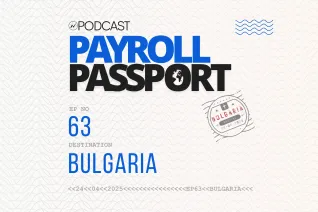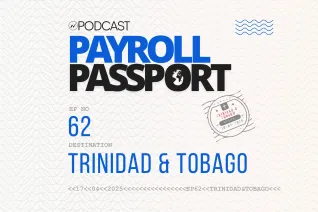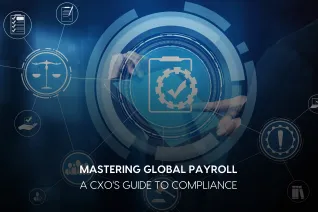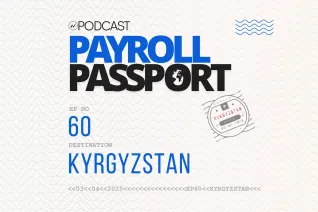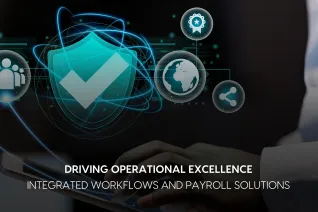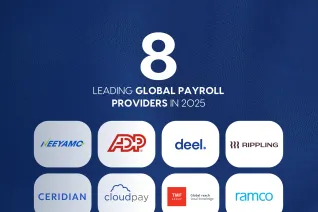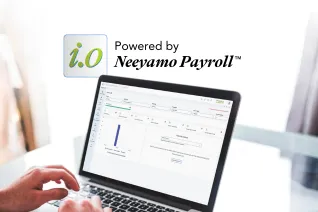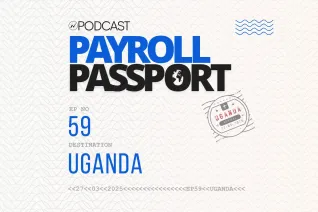How facial recognition is simplifying time and attendance management

One in a million!
That’s the probability of a random individual resembling another in a facial recognition test, says Apple on its website. Reports state that the accuracy is rising up gradually and this technology is inevitable. Facial recognition-based technology is not new to us. Ever since its inception, the technology has been a head-turner, no matter the use case – the best relatable example being mobile phone authentication. Would HR have an impact too? Yes.
Capturing employee time and attendance has always been a struggle for companies, irrespective of the industry they operate in. The time when HR teams were fiddling with loads of employee time and attendance data, confused with how to tackle time thefts and inaccuracies is a thing of the past. This is the era where sophisticated T&A solutions are using time records to create ‘time intelligence’. Facial recognition is one of the few innovative ways of how they are doing it. So, here’s how facial recognition technology is transforming HR Time & Attendance management.
Let’s time travel back to the past. Decades ago, employers recorded the in and out timings of employees manually. Firstly, this was a laborious process. Secondly, the chances of falsification of data and employees developing friction with their managers were high.
Fast forward to today, facial recognition-based time solutions enable organizations to capture employee attendance in real-time and with high accuracy. The concept behind this technology weaves artificial intelligence and machine learning together to create a sophisticated time solution.
How does this system work? Let’s see.
Input feed
Modern-age facial recognition-enabled T&A management solutions get their employee signatures to be used for identification in two ways.
- The time solution comprises a database that is fed with an image of every employee working in the organization. Employers can either use existing identification images or upload new ones. Hence, the database becomes a storehouse of the entire workforce’s identities stockpiled as baseline images. These images will be used as unique employee signatures.
- The time solution makes use of proprietary measures to locate a human face within a captured image. It also filters out the image quality/lighting issues, if any. As the next step, the solution uses multiple face detection algorithms to identify facial landmarks based on which it creates a face template. This template is taken as the custom employee signature and used in the primary authentication process.
Image comparison
Once an employee’s face is captured by the employee attendance tracking software, AI-based face-detection algorithms match the attributes of the registered image and compare instantaneously against every image in the cloud database at the backend. When a match is identified, it marks attendance and grants access to the work premises.
This one-time unlock works for multiple locations across the globe at the same time, and hence managing T&A for globally mobile employees, as well as those in the long-tail regions becomes simplified. Also, this technology’s anti-spoofing feature makes sure that validation is done accurately for a real employee and a video or a static image of him/her will not get authenticated.
Why facial recognition stands out
The notable feature of this facial recognition-based employee time tracking system is that they make time records available in real-time, in contrast to biometric and ID cards that synchronize employee data with a time lag. With such a robust system, managers are empowered to make crucial resource allocation decisions.
Furthermore, the chances of scamming this employee time management system are almost nil, but that’s not the case when it comes to other attendance marking models. There are other bells and whistles too. As a step forward towards workplace ethics, these systems can also be integrated with breathalyzers and health-monitoring systems to check on employees being drug-free at work.
Another interesting thing to notice is that this employee attendance software is able to detect the ages of employees. So, employers can ensure employees do not attend multiple shifts and ghost employees do not exist.
Buddy punching is a major concern for HR when it comes to time and attendance management. Time fraud through buddy punching can cost a company 1.5 to 5% of the gross payroll, as stated by APA. Facial recognition technology makes sure that employees do not indulge in buddy punching.
The caution message
Companies that incorporate these time and attendance tracking systems should be cautious that they adhere to data protection and privacy regulations. Since enormous amounts of employee identification data are used as inputs, the time-tracking solution should ensure that the data is safe and secure. Futuristic solutions safeguard the workers’ privacy by using binary digits and not the exact images for comparison and authentication. Staying compliant from the glocal perspective is key.
Technologies like facial recognition are here to thrive and companies that dynamically adapt them will stay ahead in the race toward maximized HR efficiency. Nevertheless, companies should think before dipping their feet into the water. They should choose solutions with future-proof features that would help HR leaders steer companies toward persistent success.
To know more about how you can leverage the potential of facial recognition and make time & attendance management flawless, drop us a line via irene.jones@neeyamo.com. Our experts will get in touch with you.
Are you interested to know how Neeyamo fully automated time and attendance management for a multi-million dollar financial and insurance services company? Click here to read the case study.
Latest Resources
Stay informed with latest updates
If you're curious and have a thirst for knowledge pertaining to the HR, payroll, and EOR universe, don't miss out on subscribing to our resources.



